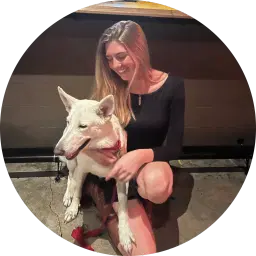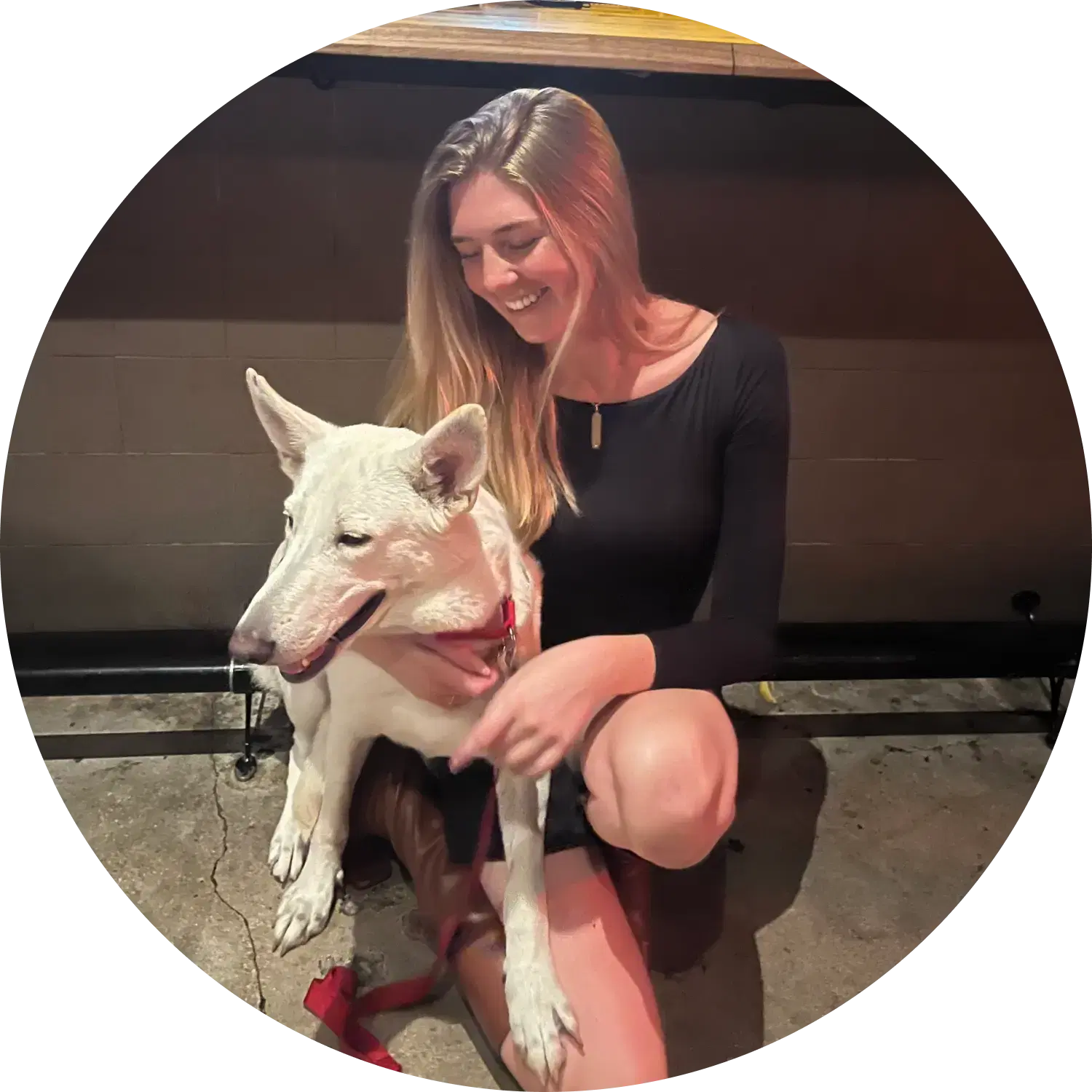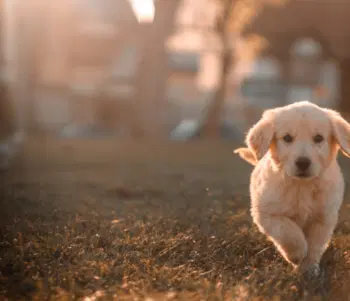There are archaeological evidence dogs were the first animals domesticated by humans more than 30,000 years ago (1). But did you know that all the dogs we see today, were wolves back then? It started with wolves scavenging food scraps from humans and then humans domesticating the wolves, providing them shelter and protection. In return, the wolves helped the human hunter-gatherers with hunting. So, we humans have been getting along pretty well with dogs for thousands of years.
How to Potty Train a Puppy
Start with understanding the puppy’s schedule – New pups, especially 12 weeks or younger, take time to develop bladder control. You should take the puppy out every 1-2 hours so that they don’t end up littering the house.
Develop a schedule – Puppies usually let it out after sleeping, eating, playing or drinking. Maintain a consistent meal schedule so that the potty schedule gets synchronized accordingly.
Learn their sign language - Most dogs will sniff, make circles, wander off, whine, or sit by the door to indicate they need to go to the bathroom. Paying attention to these will ensure no in-house accidents.
Reward – Remember that a reward always works better than a punishment in this case. Each time your puppy urinates/defecates outside, reward them with verbal praise, treats, or a favorite toy. Make sure that the reward comes immediately after the action so that the pup can associate it with going outside for potty.
While you follow the above guidelines, there are some don’ts to this list.
No potty pads – Unless you are living in a high-rise apartment with limited mobility, using potty pads and allowing your pup to defecate inside the house may confuse them about the right behavior.
Do not punish – Dogs do not associate any kind of punishment with an action. Instead, they will start fearing their human. This may harm the bond between the two.
How to House Train a Puppy
You may want to teach some basic commands to your new pup. This is how you can do it –
How to Make a Puppy Come to You
1. Call your pup by its name and give it a treat.
2 )Next time, drop a treat on the floor and once your pup is done eating, call by the name again and give a treat once it looks up.
3. Repeat this a couple of times a day and you may start seeing your dog responding to you calling the name.
4. Remember to never call your dog for punishment. Or else, your dog will start fearing you and won’t come even if you offer a treat the next time.
Teaching Leash Walking to a Puppy
1. A leash can be uncomfortable at first for the pup. Offer a treat in the initial times.
2. Hold the leash loose and take a step forward. Encourage the pup to follow by offering a treat as they follow.
3. When the pup starts walking or running in front of you, turn around and call them. Offer a treat once it comes and then continue walking.
4. You can let them explore the grass or the car tyres on the walk and then say commands like ‘Let’s go’ in a positive voice and reward them with praise or a treat for coming back.
Teaching Your Pup to Sit
Stand in front of your puppy holding a treat and wait for them to sit.
Once they do, you can say something like ‘yes’ or ‘good’ and offer the treat.
Repeat it a couple of times to make the pup associate the sitting behavior with the treat.
Teaching your pup to stay (this one is similar to making the pup sit)
Toss a treat on the floor and say a release word like ‘okay’ as they step forward to get the treat.
Repeat this a couple of times until you can say the word first and then toss the treat after they begin to move. This teaches the dog that the release cue means to move your feet.
Next, make them sit, turn and face them, and give them a treat.
Pause, and give them another treat for staying seated and then release them.
Gradually increase the time you wait between treats.
These basic commands will help you communicate easily with your four-legged buddy. But not to forget the most important of all.
How to Train a Puppy Not to Bite
Want to learn how to train a puppy not to bite? Puppies bite for several reasons. These include curiosity, playfulness and instincts. It’s natural for any animal, including humans, to want to explore the new world they’ve just been born in. Puppies will have these strange pointing things in their mouths because they are exploring. However, in the early stages itself, they need to be trained on what to bite and what to not. Here are some ways to stop your pup from biting –
Vocalize – Be vocal about your pain when the pup bites you and use words like ‘Ouch’, ‘No’, and ‘Stop’. Be firm with the command and repeat the same word every time they bite.
Bad-taste sprays – No one likes to bite on things that taste bad, not even puppies. There are ‘no chew sprays’ available out there that you can spray on your belongings to stop them from biting.
Replace – For puppies, the urge to keep biting may be stronger given their curiosity. You can replace whatever they are biting with a toy that can chew on. Do go for vet-recommended safe toys though.
Feed their curiosity – With all the energy surge, puppies may want to keep biting things to spend it. You can try playing a game of tug or any other physical activity to tire your pup.
Socialize – If your pup is barking and running to bite another dog, you need to socialize it more and better. Take your pup to play with other puppies. Make them comfortable with other dogs. The more they start getting familiar with having other dogs in the room, the less they will bark and bite the next time.
Throw a tantrum – Weirdly, throwing a tantrum like walking away when your puppy bites can also work. Most dogs are people pleasers and if they associate their behavior with the owner going away, they will refrain from doing it.
Praise – And lastly, if you’re punishing bad behavior, it’s only fair that you reward good ones. If the puppy stops biting or barking immediately after you say no, make sure you praise and treat them.
FAQs
What is the first thing you should train a puppy?
The first thing should be to train your pup to respond to your name. You can then move to basic cues like sit, stand and stay.
At what age is training a puppy the hardest?
It is believed that a puppy is hardest to train in its Adolescence age which is 6 – 18 months. This is like their puberty period which comes with hormonal changes.
Where should a puppy sleep at night?
A crate or a designated bed in a quiet and safe area is ideal for a puppy to sleep. But there’s nothing wrong with making them sleep beside you as it makes them feel secure.
Related Readings

The resident animal enthusiast at Spot. I have a lifetime of pet parent experience. If it has fur, feathers, or scales, I’ve probably shared my home with it. I aim to be a reliable source, blending experience with a dedication to the well-being of pets.
Human-dog relationship – a historical perspective | Boehringer Ingelheim. (2024, March 14). Boehringer Ingelheim. https://www.boehringer-ingelheim.com/animal-health/our-responsibility/human-dog-relationship-historical-perspective
Kpa-Ctp, P. L. R. (2024, March 26). Teach your puppy these 5 basic cues. American Kennel Club. https://www.akc.org/expert-advice/training/teach-your-puppy-these-5-basic-commands/
Levin, D. (2023, June 22). How to train a puppy not to bite: 9 tips & tricks. wikiHow. https://www.wikihow.com/Train-a-Puppy-Not-to-Bite
Hoffmann, H., DVM. (2024, April 10). How to potty train a puppy. PetMD. https://www.petmd.com/dog/general-health/how-to-potty-train-a-puppy












